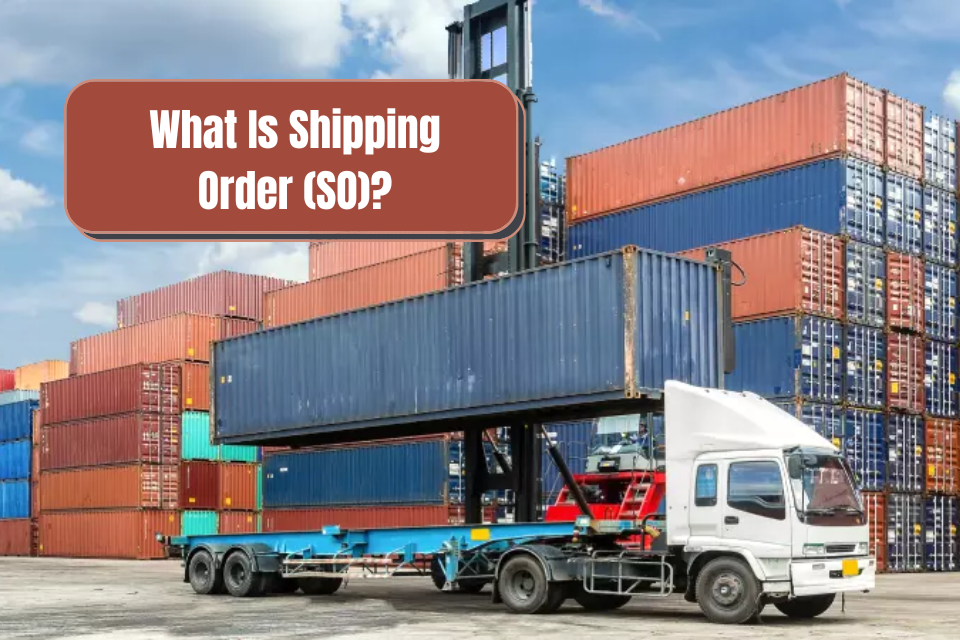A document delivered by the shipping line that confirms where space and equipment is available on a ship at a particular instance is a shipping order (SO). It also gives out details of when and where a container is free for use and the delivery details as well with the relevant timelines to complete the shipping of the material.
In certain parts of the world, the shipping order is also referred to as Container Release Order (CRO) or as Authority to Withdraw (ATW). There are also times when the shipping order is attached to the booking confirmation of the
The SO will contain details where the empty container can be picked up and the time of sailing of the ship on the order and also the vessel number.
Who Issues a Shipping Order?
The shipping order is issued by the carrier of the shipment that has been scheduled for dispatch. Most of the time the carrier is a company or concern that operates a ship on the seas. For instance, Maersk is a carrier that operates ships to transport goods across the globe and it would be the company Maersk that would be issuing a SO for transporting goods to places serviced by their ships.
At times, it is also possible that the shipping order is issued by an agent or body that is duly recognized as being representative of the carrier. Although the term carrier is usually used to depict a shipping company, it is also possible to have carriers that use air and road transport to transport the goods.
What Information Is Present on A Shipping Order?
There is no standard template for issuing a shipping order. But the common practice is to include some of the more interesting details to enable a safe and confirmed delivery of goods from one place to another.
-
Shipper Details
The shipper is someone that sends the goods via the ship to another person across the globe. Everything from the name to the address of the shipper is recorded in the shipping order. It would thus be possible to locate the shipper no matter wherever they are located.
-
Forwarder Details
This is the details of the shipping company that transports the consignment. Often when the shipper and the shipping company are the same, this field is left blank. The shipping order in this case would be released to the shipper or their appointed agents.
-
Type of Cargo
The shipping order would contain the details of the type of cargo that has been booked for transportation.
-
Bill of Lading Number
The bill of lading which is the official document that is released by the shipper is quoted on the shipping order. This action would provide a legal sanctity to the document most of the time. The bill of lading number is also used to track a shipment during the course of its journey.
-
Place Of Receipt
In short, the place of receipt where the empty container has to be delivered to is indicated here.
-
Port of Loading
The place where the goods are loaded onto ships are declared as port of loading and is indicated on the shipping order. Sometimes when the loading in done in an Inland Container Depot, the place would be a landlocked location.
-
Port of Discharge
This would be the location where the receiver of the goods being shipped has to take charge of the consignment. It is also referred to as the destination port.
-
Place of Delivery
The location where the shipment has to be delivered to is entered here. Often when the place of delivery is away from a port or harbour, it is necessary to pay for the haulage so that the container can be transported across land or sea to the final place of delivery.
-
Transhipment port
When a container needs to be shifted from one ship to another, it is referred to as transhipment and the port where it is done would be indicated on the SO.
-
Vessel Name and Voyage Number
This would record the details of the vessel that is going to carry the container and the route number for the sail.
-
Container Type
Depending on the type of container the SO would make note of it here. E.g. high cube, general purpose, flat-rack, open top or reefer.
-
Pick Up Location
This would usually denote where the empty container has to be picked up for stuffing.
-
Return Location
The location where the stuffed container is to be delivered to ready for shipment.
-
Document Cut Off
The date and time within which the documentation has to be done and reported to the shipping company is given here. A failure to stick to the given timings would involve a penalty fine most of the time.
-
VGM Cut Off
The Verified Gross Mass along with the date and time has to be reported mandatorily as per SOLAS 2014.
-
CY Cut Off
This is the last date and time within which the shipping agency is able to accept the loaded container.
Conclusion
Thus, the explanation as to what constitutes a shipping order has been detailed in the above. The process has been developed to see that consignments are delivered on time and without any problems. It makes it easier to track shipments too while in transit.



